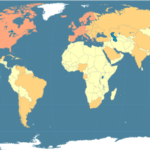Unveiling Seoul’s Captivating Cultural Tapestry
You may have come across the phrase “soul t ukpyolsi” and wondered about its meaning. While it’s not an actual Korean term, it does hint at something special about Seoul, the dynamic capital of South Korea. Let’s delve into the true essence of Seoul, exploring the vibrant cultural soul that makes it so captivating.
Imagine a city where ancient palaces stand tall amidst modern skyscrapers, where the tantalizing aroma of street food mingles with the melodies of K-pop. That’s Seoul – a captivating blend of tradition and trendsetting, history and innovation.
The legacy of the Joseon Dynasty, which reigned for over five centuries, is evident in Seoul’s grand palaces like Gyeongbokgung and Changdeokgung. These aren’t merely relics of the past but living testaments to Seoul’s heritage, places where residents and visitors connect with Korea’s rich history.
But Seoul is far from frozen in time. As a global hub for art and technology, Seoul boasts a pulsating creative scene. Venture into the trendy Gangnam district’s galleries, and you’ll likely encounter thought-provoking and inspiring art. And of course, there’s K-pop, the infectious musical phenomenon that originated in Seoul and continues to electrify the city’s atmosphere.
Speaking of electrifying, Seoul’s culinary scene is a feast for the senses. Picture bustling street markets where vendors whip up steaming bowls of kimchi jjigae (kimchi stew), sizzling plates of bibimbap (mixed rice with meat and vegetables), and mountains of fiery tteokbokki (spicy rice cakes). Each dish tells a story of Korean culinary heritage, passed down through generations.
However, Seoul’s cultural soul runs deeper than its iconic landmarks and flavors. It’s in the respectful bow exchanged between strangers, a simple gesture that speaks volumes about Korean etiquette. It’s in the energetic hum of the Namdaemun Market, a treasure trove of traditional crafts and cutting-edge electronics. It’s in the tranquil beauty of the Bukchon Hanok Village, where traditional Korean houses with their sloping roofs and serene gardens offer a glimpse into a bygone era.
So, while “soul t ukpyolsi” might not be a real word, it unintentionally captures the essence of Seoul—its distinct and captivating spirit. It’s a city of contrasts: ancient yet modern, bustling yet tranquil, familiar yet full of delightful surprises. And that’s precisely what makes it so alluring.
A Journey Through Time: Seoul’s Evolving Names
Seoul’s extensive history, dating back to the Paleolithic Era, has seen its name change several times, much like finding old yearbooks and tracing your hometown’s evolution.
During the Three Kingdoms Period (18 BC – 668 AD), present-day Seoul was known as “Wiryeseong,” serving as the capital of the Baekje Kingdom. Imagine the daily life and customs of those who called Wiryeseong home, the earliest known incarnation of Seoul.
Fast forward to the Joseon Dynasty (1392-1910), when the city officially became “Hanseong,” a name that exudes grandeur. However, locals continued to use “Seoul” colloquially, demonstrating the resilience of informal names against official designations.
The Japanese occupation (1910-1945) brought another name change – “Gyeongseong” – reflecting the power dynamics of that era. Yet, even under occupation, Koreans kept the spirit of “Seoul” alive, whispering it as a symbol of their identity and resistance.
Finally, with Korea’s liberation in 1945, “Seoul” was officially reinstated, marking a triumphant return to its true identity. In 1949, Seoul was designated a “Soul-t’ukpyolsi,” meaning “special city,” signifying its importance within South Korea.
The evolution of Seoul’s name reflects its rich and sometimes turbulent past. Each name represents a distinct chapter in the city’s captivating story, leaving us to wonder what other secrets lie hidden within its ancient streets.
Seoul vs. London: A Tale of Two Cities’ Size
Determining whether Seoul is bigger than London isn’t simply about comparing land area. It requires understanding how each city defines “big” within its unique context.
Seoul, designated as a “Special City” within South Korea, enjoys a degree of autonomy in its development and growth. This has likely contributed to its vertical expansion, characterized by towering skyscrapers and efficient land use.
London, officially known as “Greater London,” has embraced a more sprawling approach, encompassing not just its central core but also surrounding suburbs and even some countryside parks. This expansive layout creates a different urban experience compared to Seoul’s more compact cityscape.
While Seoul might appear smaller on a map, its high population density creates a palpable energy. Imagine a constant buzz of activity, day and night! London, with its vastness, offers a more relaxed pace, blending urban dynamism with pockets of tranquility.
So, which city claims the title of “bigger”? The answer depends on your perspective and what you seek in an urban environment. If you thrive on non-stop energy and being immersed in a bustling crowd, Seoul might feel like the more enormous giant. However, if you prefer a mix of urban excitement and peaceful retreats, London might feel more expansive.
Ultimately, it’s not about measuring land but experiencing the unique character of each city.
Before Seoul: Korea’s Shifting Capitals Through Time
Seoul might be the current capital of South Korea, but it hasn’t always held this distinction. Korea’s long and fascinating history includes several capital cities, each leaving its mark on the country’s heritage. Let’s take a journey back in time to explore these significant cities:
- Wiryeseong (Present-day Seoul): As we’ve discovered, Seoul’s history as a capital dates back to 18 BC when it was known as Wiryeseong, the seat of power for the Baekje Kingdom (18 BC – 660 AD). It’s remarkable to consider the vast expanse of history that has unfolded on this very ground.
- Gyeongju: This city boasts an impressive reign as a capital. From 57 BC to 935 AD, Gyeongju served as the heart of the Silla Kingdom. It even maintained its capital status when Silla unified the Korean peninsula, a period renowned for its remarkable artistic and cultural achievements. The ancient walls of Gyeongju likely hold countless stories within their stones.
- Gaeseong (also known as Kaesong): With the rise of the Goryeo Dynasty in 918 AD, Gaeseong, located in present-day North Korea, took its turn as the capital. During this era, Gaeseong exerted its own influence and played a pivotal role in Korean history.
- Hanyang (Present-day Seoul): In 1394, King Taejo of the Joseon Dynasty made the significant decision to relocate the capital to Hanyang, which we now know as Seoul. This move marked a turning point, shaping Korea’s destiny and paving the way for the modern metropolis we see today.
The shifting locations of Korea’s capital throughout history reflect the changing political landscape and the rise and fall of kingdoms. Each of these cities has contributed to the rich tapestry of Korean identity, leaving behind a legacy of history, culture, and heritage that continues to fascinate and inspire.
Addressing the “Soul t ukpyolsi” Misconception
You might have encountered the term “soul t ukpyolsi” while searching for information about Seoul. It’s important to clarify that this is not a real Korean word or concept.
Here’s why “soul t ukpyolsi” is likely fabricated:
- Lack of Real-World References: Reliable sources on Korean history, culture, or administrative divisions do not mention “soul t ukpyolsi.”
- Linguistic Inconsistencies: The term’s structure and Romanization don’t align with typical Korean words or place names.
- Dubious Website Content: Websites that use “soul t ukpyolsi” often contain placeholder text or inaccurate information, indicating they are not credible sources.
Instead of focusing on this fabricated term, it’s best to stick to accurate and relevant keywords when searching for information about Seoul.
For a deeper understanding of this captivating city, consider exploring:
- Seoul’s “Special City” Status: Learn about Seoul’s unique governance and administrative structure compared to other cities in South Korea.
- Seoul’s Historical Significance: Delve into the city’s rich past, from its ancient origins to its role as the capital of various dynasties.
- Seoul’s Cultural Treasures: Discover the city’s iconic landmarks, traditional arts, modern cultural influences, and of course, the captivating world of K-pop.
Seoul is a city brimming with fascinating stories waiting to be uncovered. By focusing on accurate information and engaging content, you can embark on a captivating journey through the heart and soul of South Korea’s dynamic capital.
Internal Links:
Check out our spacebattles creative writing to see what we’re up to or to generate your own spacebattles story. Are you more into sovereign citizen bingo? We’ve got plenty of that content too.
- Georgia Platform: A Southern Strategy, 1850s - March 31, 2025
- How many weeks is 40 days: Quick Conversion Guide for Accurate Results - March 31, 2025
- How many feet is 300 meters? 984 Feet: Understand Length Conversions Easily - March 31, 2025
















